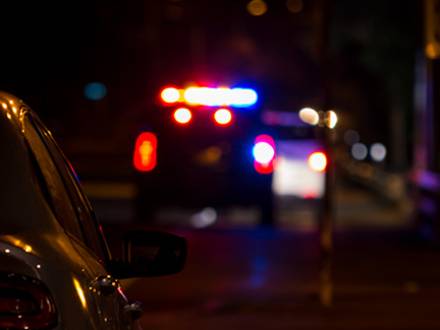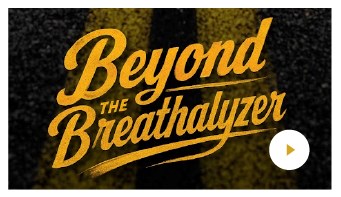FOURTH AMENDMENT FRIDAY FUNDAMENTALS - CASE #3: Navarette v. California
 I had previously selected Navarette v. California for this week, and I believe it goes nicely here because of its position in the line of cases we have reviewed so far. First, we had Prouse, which gave us the holding that the Fourth Amendment prohibits arbitrary or random car stops. Then we had Cortez, which held that the Fourth Amendment required traffic stops to be based on particularized reasonable suspicion as determined from a review of the totality of the circumstances. Navarette is a traffic stop case from 2014, where the Court reviews its prior anonymous tip jurisprudence to determine whether an anonymous 911 call can justify a traffic stop.
I had previously selected Navarette v. California for this week, and I believe it goes nicely here because of its position in the line of cases we have reviewed so far. First, we had Prouse, which gave us the holding that the Fourth Amendment prohibits arbitrary or random car stops. Then we had Cortez, which held that the Fourth Amendment required traffic stops to be based on particularized reasonable suspicion as determined from a review of the totality of the circumstances. Navarette is a traffic stop case from 2014, where the Court reviews its prior anonymous tip jurisprudence to determine whether an anonymous 911 call can justify a traffic stop.
Before I get into the specifics of the case, a review of the prior anonymous tip cases might be helpful:
I am going to start with Illinois v. Gates, 462 U.S. 213 (1983), where an anonymous letter was sent to the police, tipping them off about a drug operation. At that time, courts were operating under what was known as the "Aguilar-Spinelli" approach – what the Gates Court called a "rigid ‘two-pronged’ test." This test was rejected and replaced with the totality of the circumstances review, where reliability of the anonymous information is judged by detail, corroboration, and common sense inference. Of particular note is the "significant value" that the Gates Court gave to the corroborative efforts of the police officers involved.
Seven years later, we have Alabama v. White, 496 U.S. 325 (1990), where an anonymous tip predicted that a woman would leave a particular apartment at a particular time in a particular vehicle in possession of cocaine, and that she would drive to a particular motel. Police proceeded to the apartment building, and watched as the vehicle described left the building, and stopped her on the most direct route to the motel, just short of her arrival at the location. She was found to be in possession of cocaine. From this case we get the rule that an anonymous tip, if sufficiently corroborated by independent police work, can generate sufficient reasonable suspicion to justify a traffic stop. The Court found that the predictive details were the key to finding reliability:
"Thus, it is not unreasonable to conclude in this case that the independent corroboration by the police of significant aspects of the informer’s predictions imparted some degree of reliability to the other allegations made by the caller." Fast forward another ten years, and we have Florida v. J.L., 526 U.S. 266 (2000), where an anonymous tip reported a young man at a bus stop was carrying a gun. There was no predictive detail, no corroboration. The Court rejected the information as sufficient to justify a Terry stop and frisk, and held that an unverified, bare-bones anonymous tip is not enough for reasonable suspicion. Said the Court: "An accurate description of a subject’s readily observable location and appearance is not enough."
With that history in mind, let’s go to the dark desert highways of the west coast, and Navarette v. California, 572 U.S. 393 (2014). In a 5 – 4 decision, the Court upheld the traffic stop in this case, where a 911 caller reported that a vehicle had run her off the road. She described the vehicle and provided a license plate. In its review, the Court found that the description of the vehicle and its location (see Florida v. JL, supra) "lends significant support to the tip’s reliability." The Court also found that the contemporaneous nature of the call and the use of the 911 call system itself – as well as the claim of being "run off the road" – were enough for reliability to be found.
On to criminal activity. The Court attempts to address the question of whether this 911 call "create[d] reasonable suspicion of an ongoing crime such as drunk driving as opposed to an an isolated episode of past recklessness[?]". These facts (the report of being "run off the road," etc.) standing alone, led the Court to find sufficient reliability and reasonable suspicion for a DUI traffic stop.
Justice Scalia, dissenting, makes quick work of the majority’s reliability calculus, and then moves on to dispel the idea of reasonable suspicion:
Not only, it turns out, did the police have no good reason at first to believe that Lorenzo was driving drunk, they had very good reason at last to know that he was not. The Court concludes that the tip, plus confirmation of the truck’s location, produced reasonable suspicion that the truck not only had been but still was barreling dangerously and drunkenly down Highway 1. In fact, alas, it was not, and the officers knew it. They followed the truck for five minutes, presumably to see if it was being operated recklessly. And that was good police work. …But the pesky little detail left out of the Court’s reasonable suspicion equation is that, for the five minutes that the truck was being followed (five minutes is a long time), Lorenzo’s driving was irreproachable. …Consequently, the tip’s suggestion of ongoing drunken driving (if it could be deemed to suggest that) not only went uncorroborated; it was affirmatively undermined.
While I have always said that my favorite thing about Justice Scalia was his tendency to quote himself from his past dissents as the authority for his position in his current dissents (see Scalia, J., dissenting), I will also add here that the man could turn a phrase:
The Court’s opinion serves up a freedom-destroying cocktail consisting of two parts patent falsity: (1) that anonymous 911 reports of traffic violations are reliable as long as they correctly identify a car and its location, and (2) that a single instance of careless or reckless driving necessarily supports a reasonable suspicion of drunkenness.
Drunk driving is a serious matter, but so is the loss of our freedom to come and go as we please without police interference. To prevent and detect murder we do not allow searches without probable case … [w]e should not do so for drunken driving either.
This decision seemed to reject the idea established in the Court’s prior jurisprudence that an uncorroborated tip was insufficient to establish reasonable suspicion, instead requiring corroboration and predictive details. Now, Navarette appears to permit a stop where there is a debatable modicum of reliability associated with the tipster and an unsubstantiated (even undermined) allegation of dangerous driving behavior.
Stay tuned for more Fourth Amendment Friday Fundamentals.





